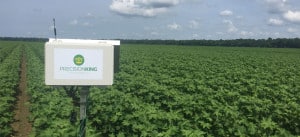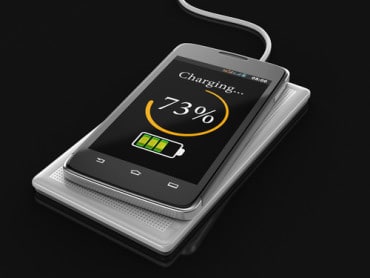
Check out how one IoT application helps U.S. rice farmers cut down on water use and avoid energy over-consumption, leading to fewer carbon emissions.
Name of organization: Precision King
Industry: Agriculture
Location: Arkansas
Opportunity or Challenge Encountered: Given the potentially significant environmental impacts of rice production, innovative farmers have recognized the need to increase efficiency so they can grow more rice with fewer resources. “Alternate Wetting and Drying” (AWD) is a method of rice farming that addresses many of these environmental challenges. Instead of keeping a constant four-inch flood, AWD allows fields to dry down between floods after establishing the initial flood.
By decreasing the amount of time fields remain flooded, AWD reduces water use, fuel and electricity use for running irrigation pumps, and the need for nitrogen fertilizers, while also slowing down the anaerobic activity that creates methane gas. Farmers and researchers are working together to optimize AWD and have found that when implemented properly, the practice can potentially increase yields while reducing fertilizer and water inputs as well as GHG emissions. However, AWD can be challenging. It requires farmers to control water levels carefully across large tracts of land. It also introduces risk to the rice crops, as it can be difficult to assess depth accurately with only a few measurements at various points in the fields. Together, these barriers have slowed adoption of AWD.
See also: From farm to cloud in real-time
How This Opportunity or Challenge was Met: Using AT&T’s IoT solutions to connect water-level sensors and pumps can increase the control farmers have over their operations, helping to drive efficiencies and overcome some of the barriers to AWD adoption. As described below, PrecisionKing is an innovative technology company that is collaborating with AT&T to do just that. PrecisionKing’s RiceKing sensors are placed across farmers’ rice fields, where they read water levels once an hour, allowing for 24-hour monitoring, while the PumpKing remote monitors allow farmers to set customized parameters for remotely turning pumps on and off.
AT&T wireless connections between these pieces of equipment enable the transmission of water-level data collected from the RiceKing sensors to a management system that can be programmed to automatically signal AT&T-connected PumpKing monitors to turn pumps on and off as needed. This reduces water use and prevents over-flooding or excessive drying — all without requiring anyone to physically be in the field.
This system also creates a historical record of the water depth over time. With more high-quality data available, farmers are better able to optimize management and reap the direct and indirect benefits of AWD. For instance, because the sensors can generate such accurate information about water depth, farmers can more easily collect the data required for verification of AWD-enabled GHG emissions reductions. Using AT&T’s wireless network to connect these sensors and pumps greatly simplifes the collection of data and avoids the need for farmers to install wired or complex mesh network solutions.
The addition of AT&T IoT connectivity to AWD can enable more efficient and reliable AWD processes, increase its ease of use and help drive financial savings from water reduction.
Benefits of this Initiative: Jim and Sam Whitaker started farming in Arkansas in the early ‘90s, and they quickly recognized that running a successful farm would require resource efficiency. Seeing drought conditions across the country and recognizing the threat that climate change could pose to their business, the Whitaker brothers became early adopters of technology-enabled AWD.
For the past five years, Jim and Sam have collaborated with PrecisionKing to optimize their rice fields. By using PrecisionKing technology and AT&T IoT connectivity, the brothers aren’t gauging water levels by eye anymore. Instead, the technology increases the accuracy of water-depth monitoring and saves time and water. And remote pump-control technology turns pumps on and off as needed, helping to maintain optimal water levels without having to drive to the pump and make the change manually.
This operational insight and control is driving real operational efficiencies for Whitaker Farms. According to information collected by Jim, the RiceKing water-level sensors have been an important component in reducing Whitaker Farms’ water usage by up to 60%. Additionally, the PumpKing controls have been a crucial factor in helping to reduce pump energy usage by 20-30%.
[Via AT&T]




























